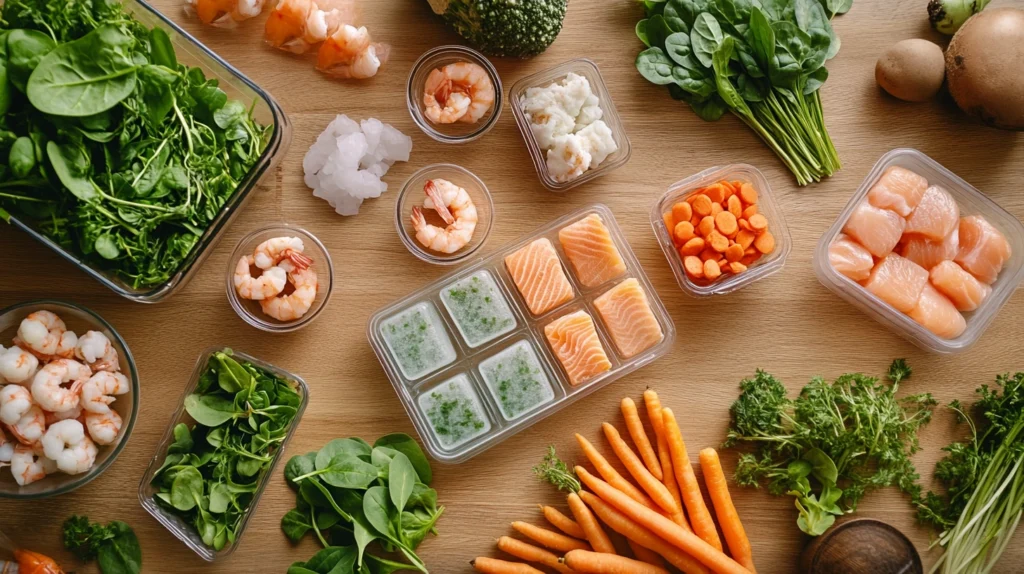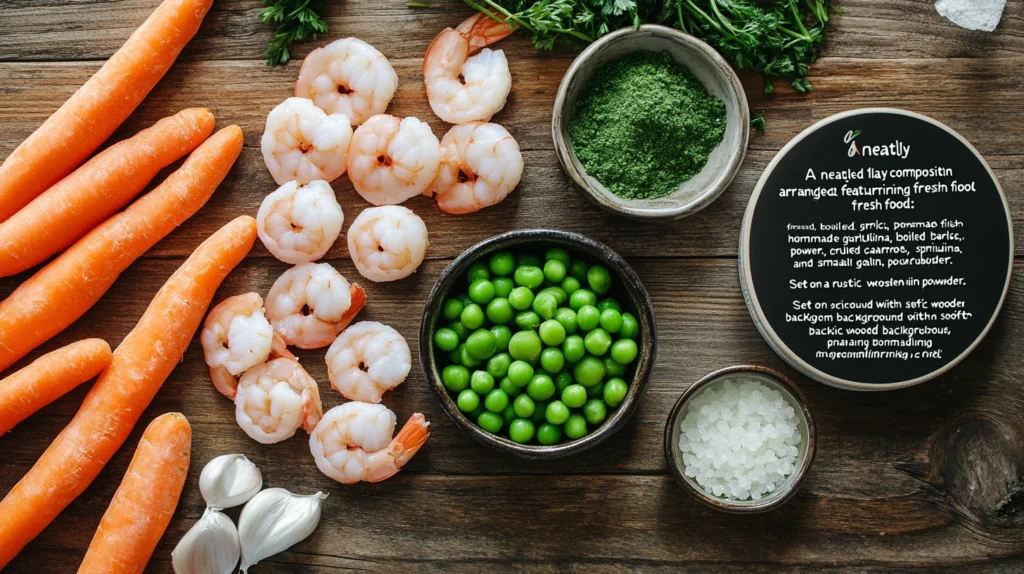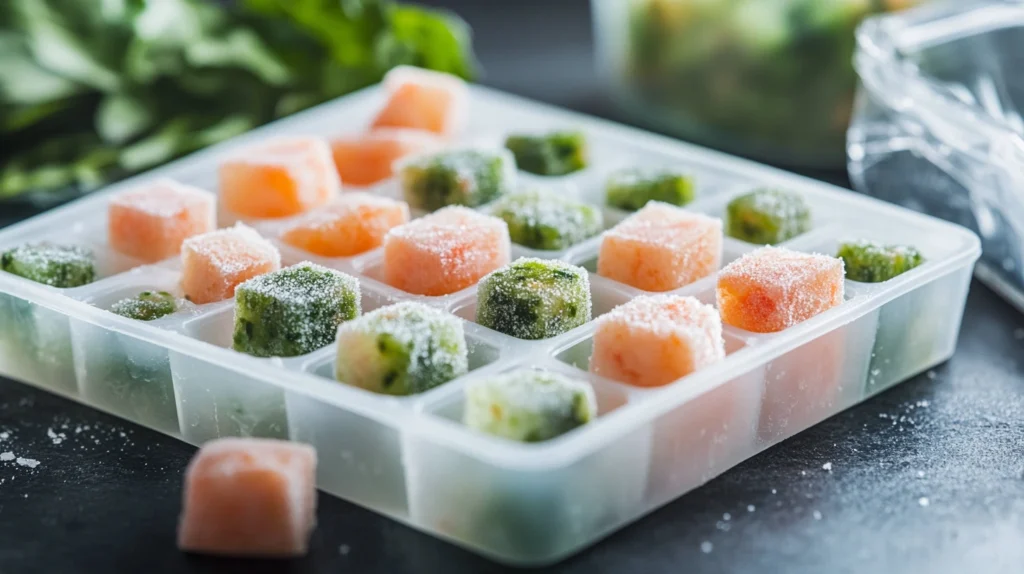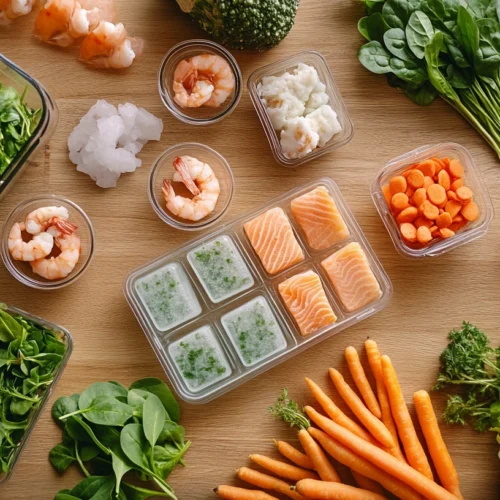Feeding your fish the right food is super important if you want them to stay healthy and active. While store-bought fish food is easy to find, it often has chemicals or fillers that aren’t the best for your fish. That’s why many fish keepers are now making their own food at home. It’s cheaper, healthier, and you get to choose exactly what goes into it.
The best homemade fish food is made with natural ingredients like vegetables, seafood, and even fruits. You can mix and match to suit different types of fish, whether they’re goldfish, bettas, or tropical species. Making fish food at home might sound tricky, but it’s actually pretty simple once you get the hang of it.
In this article, we’ll show you how to make the best homemade fish food with easy recipes, tips, and step-by-step guides. You’ll learn what your fish really need to eat, how to prepare and store the food, and how to feed it the right way. Get ready to see your fish thrive on a healthy, homemade diet!

Benefits of Best Homemade Fish Food
Creating your own fish food offers many advantages, making it a smart option for aquarium enthusiasts. Let’s look at some of the main advantages.
Control Over Nutrition
Homemade fish food lets you adjust the nutrients to match your fish’s needs. Different fish species require different nutrients for their health:
- Protein Levels: Carnivorous fish like Bettas and Oscars need diets high in protein, while herbivorous fish like Plecos need more plant-based food.
- Balanced Vitamins: Vitamins like C and D help your fish stay healthy.
- Avoid Fillers: Store-bought fish food often contains fillers that offer little value. Homemade food avoids these unnecessary ingredients.
Cost-Effective
Preparing fish food at home can help reduce your expenses. Instead of buying expensive commercial food, you can use ingredients like shrimp, vegetables, and gelatin that are often cheap and easy to find.
Better for the Environment
Making fish food at home helps cut down on waste and is more eco-friendly. Store-bought food is often packaged in plastic and transported over long distances, increasing its carbon footprint.
- Use leftovers like vegetable peels and fish trimmings to make fish food.
- Choose sustainable and locally sourced ingredients to lower environmental impact.
Healthier Fish
Fresh, high-quality ingredients help fish digest food better, improve their colors, and boost their immune systems. Over time, you’ll notice your fish are more active, healthier, and growing well.
Avoid Harmful Additives
Store-bought fish food can include preservatives and chemicals that harm fish over time. Homemade food uses only natural and safe ingredients, keeping your fish safe and healthy.
Essential Nutritional Needs for Healthy Fish
To make the best homemade fish food, you need to understand what nutrients fish need to stay healthy. Fish diets depend on their natural habits, species, and feeding style.
Macronutrients: Proteins, Fats, and Carbohydrates
Fish need three main nutrients to grow, stay active, and stay healthy.
- Proteins:
Proteins help with growth and repairing body tissues. Carnivorous fish need more protein (40%-60%), while herbivorous fish require less (15%-30%).- Example: Shrimp, fish meal, or boiled eggs.
- Fats:
Fats provide energy and help fish absorb vitamins. Use healthy fats like fish oil and flaxseed in moderation. - Carbohydrates:
While fish don’t need many carbs, herbivorous fish benefit from carbs found in plants like algae or spirulina.
Vitamins and Minerals
Vitamins and minerals keep fish healthy and help prevent diseases.
- Vitamins:
- Vitamin C: Boosts immunity and prevents diseases.
- Vitamin A: Helps with colors and reproduction.
- Vitamin D: Keeps bones strong.
- Minerals:
- Calcium: Strengthens bones.
- Iron and Magnesium: Improves oxygen flow and energy.
Ingredients for Homemade Fish Feed
When making fish food, you can combine proteins, carbs, and vitamins to match your fish’s needs.

Protein Sources
Protein is the most important ingredient for fish food, especially for carnivorous and omnivorous species.
- Shrimp or Prawns: Rich in protein and enhances fish color.
- Eggs: Affordable and easy to blend into recipes.
- Fish Fillets: A low-cost and healthy option.
- Tofu: A good plant-based protein for herbivorous fish.
Carbohydrate Sources
Herbivorous and omnivorous fish benefit from carbs for energy and digestion.
- Vegetables: Blanched peas, spinach, and carrots are excellent choices.
- Grains: Use oats or rice sparingly to add texture.
- Algae: Spirulina is a superfood for herbivorous fish.
Additives and Vitamins
Boost your fish food with supplements and natural additives.
- Fish Oil: Adds omega-3 for healthy scales.
- Spirulina Powder: Full of nutrients and easy to mix.
- Garlic: Helps boost immunity.
Ingredients to Avoid
Not all ingredients are safe for fish. Avoid these:
Unwashed vegetables with pesticides.
Spices, salt, or any seasonings.
Raw meats like chicken or beef.
Types of Best Homemade Fish Food Recipes
Homemade fish food can be made in different forms depending on what your fish prefer.
Gel-Based Fish Food
Gel-based food is soft, easy to make, and works well for most fish.
- Ingredients Needed: Shrimp, boiled vegetables, spirulina powder, and gelatin.
- Steps: Blend all ingredients, mix with gelatin, pour into molds, and let it set in the fridge.
Pellet-Style Fish Food
Pellets are compact and great for fish that prefer sinking or floating food.
- Ingredients Needed: Fish meal, vegetables, and flour.
- Steps: Make a dough, shape into pellets, and bake until dry.
Freeze-Dried Fish Food
Freeze-dried food is ideal for carnivorous fish.
- Steps: Slice fish or shrimp, freeze them, and remove ice crystals until fully dried.
Step-by-Step Guide to Make Homemade Fish Food
Gel-based fish food is one of the easiest and most versatile options for homemade fish food. It can be customized to suit various dietary needs and is simple to store.This guide will take you through each step of the process from start to finish.
Tools and Equipment Needed
Before you begin, gather these essential tools:
- Blender or food processor
- Saucepan or pot
- Mixing bowl
- Measuring cups and spoons
- Unflavored gelatin packets
- Silicone molds or shallow trays
- Freezer-safe containers
How to Prepare Gel-Based Fish Feed at Home
Select ingredients based on your fish species’ nutritional needs. For this guide, we’ll make a balanced gel-based recipe suitable for omnivorous fish like Goldfish or Guppies.
- Protein Sources: 1 cup of raw shrimp or fish fillets
- Vegetables: ½ cup of boiled and peeled peas, spinach, or carrots
- Additives: 1 teaspoon of spirulina powder and a pinch of vitamin powder (optional)
- Binding Agent: 1 packet of unflavored gelatin
- Water: ½ cup, for dissolving the gelatin

Cooking and Blending the Ingredients
- Cook the Vegetables: Boil vegetables like spinach, carrots, or peas until soft. Allow them to cool before peeling (if necessary) and chopping into smaller pieces.
- Prepare the Proteins: Clean the shrimp or fish fillets, ensuring there are no bones or shells.
- Blend the Ingredients: In a blender or food processor, combine the proteins, vegetables, spirulina, and optional vitamin powder. Blend until smooth.
Dissolving the Gelatin
- Heat ½ cup of water in a saucepan until it reaches a gentle boil.
- Gradually add the gelatin, stirring continuously to avoid lumps. Ensure the gelatin dissolves completely for a smooth texture.
Mixing and Setting the Gel
- Slowly pour the blended mixture into the saucepan with the gelatin, stirring until thoroughly combined.
- Pour the warm mixture into silicone molds or a shallow tray.
- Allow the mixture to cool at room temperature for 15-20 minutes, then transfer it to the refrigerator to set completely (about 2-3 hours).
Cooling and Storage
- Once the gel has set, remove it from the molds or cut it into small, fish-friendly pieces if using a tray.
- Store the pieces in freezer-safe containers or bags. Properly stored gel-based fish food can last up to 3 months in the freezer.
Feeding Guidelines for Gel-Based Fish Food
- Feed your fish only as much as they can consume in 2-3 minutes to avoid tank pollution.
- Observe the feeding behavior to ensure the gel food is the right size and consistency for your fish.
Making your own fish food is an easy and rewarding way to ensure your fish get the best nutrition. By using natural, high-quality ingredients, you can improve their health, save money, and reduce environmental waste. Whether you’re creating gel-based food, pellets, or freeze-dried meals, homemade fish food will help your fish thrive!
Would you like to explore more DIY recipes? Try this homemade apple pie filling for yourself or start your morning with a delicious Tater Tot Breakfast Bake! 😊
Frequently Asked Questions
What is the Best Homemade Food for Fish?
The best homemade food for fish depends on their type, what they eat (meat, plants, or both), and their nutrition needs. Gel-based fish food works well for most aquarium fish because it mixes proteins, vegetables, and important vitamins. Adding spirulina, shrimp, and boiled vegetables makes it balanced.
For meat-eating fish, raw protein sources like shrimp and fish are great. Plant-eating fish do best with algae, spinach, and recipes that include spirulina.
How Do You Make Your Own Fish Feed?
Making your own fish feed is simple and rewarding. Follow these general steps:
- Choose Ingredients Based on Fish Needs:
- For protein: Shrimp, fish fillets, or mealworms.
- For carbohydrates: Boiled peas, spinach, or carrots.
- For vitamins: Spirulina powder, vitamin supplements.
- Blend Ingredients: Combine the chosen ingredients in a blender or food processor until smooth.
- Bind the Food: Add a binding agent like unflavored gelatin or agar-agar dissolved in warm water.
- Set and Store: Pour the mixture into molds or trays, allow it to set in the refrigerator, then cut into portions and freeze for long-term storage.
What Are the Best Ingredients for Fish Food?
The best ingredients for fish food vary depending on fish dietary requirements, but here are common, nutrient-rich options:
- Proteins: Shrimp, fish fillets, eggs, earthworms, or tofu for herbivores.
- Vegetables: Peas, spinach, zucchini, carrots, or broccoli.
- Supplements: Spirulina powder, vitamin C, and fish oil for added nutrients.
- Additives: Garlic for immunity, paprika for enhancing coloration, and gelatin for binding.
- Carbohydrates: Algae, boiled grains like rice or oats.
These ingredients can be mixed in various ratios to cater to specific fish species.
How to Make Live Food for Fish?
Live food is an excellent choice for many carnivorous and omnivorous fish, offering natural nutrition and stimulation. Popular live food options include brine shrimp, daphnia, and worms.
- Cultivating Brine Shrimp:
- Purchase brine shrimp eggs.
- Dissolve salt in water to create a saline solution.
- Use an aerated container to hatch the eggs. Within 24-48 hours, brine shrimp larvae will appear, ready for feeding.
- Growing Daphnia (Water Fleas):
- Set up a tank with dechlorinated water and add green water (algae) as food.
- Introduce daphnia cultures. They reproduce quickly and are a nutritious live food option.
- Raising Earthworms or Micro Worms:
- Use moist soil or oatmeal as a substrate.
- Introduce worms to feed on organic matter.
- Harvest small worms for feeding carnivorous fish.
By providing a diverse live diet, you can enrich your fish’s feeding experience and boost their health.
Conclusion
Choosing to prepare the best homemade fish food is one of the most rewarding steps you can take for your aquatic pets. Not only does it give you full control over the quality and variety of ingredients, but it also deepens your bond with your fish as you begin to understand their specific dietary needs. By providing a natural, preservative-free diet, you’re ensuring better digestion, enhanced coloration, and a longer, healthier life for your fish.
From learning which proteins and vegetables are safe, to mastering easy DIY recipes, you now have the tools and knowledge to become your fish’s personal chef. Remember to start small, test new foods gradually, and observe how your fish respond. Over time, you’ll find the perfect balance that works for your tank.
With the right ingredients, a bit of planning, and a love for aquatic life, making your own fish food becomes less of a task and more of a joy. So, say goodbye to processed pellets and hello to healthier homemade options—your fish will thank you for it!

Best Homemade Fish Food – Nutritious & Cost-Effective DIY Recipe
Equipment
- ✔ Blender or food processor
- ✔ Ice cube tray or silicone mold
- ✔️ Mixing bowls
- ✔ Measuring spoons and cups
- ✔ Spoon for portioning
- ✔ Freezer-safe container or ziplock bag
Ingredients
- Protein Source Essential for Growth & Energy
- ½ cup cooked shrimp or fish deveined, no seasoning
- ½ cup cooked chicken liver for carnivorous fish
- ¼ cup bloodworms or daphnia optional for added protein
- Vegetables & Fiber For Digestion & Overall Health
- ½ cup boiled peas removes shells for easier digestion
- ½ cup spinach or kale chopped, provides essential minerals
- ¼ cup carrots or zucchini for color enhancement
- Additional Nutrients & Binders
- ½ teaspoon spirulina powder for color vibrancy and immunity
- 1 clove garlic boosts fish immunity
- 1 tablespoon unflavored gelatin powder acts as a binding agent
- ¼ cup fish flakes or pellets optional, for added familiarity
- ½ cup water for blending
Instructions
- Step 1: Prepare the Ingredients
- Boil vegetables (peas, spinach, carrots) until soft, then drain.
- Cook the shrimp or fish (if not already cooked). Remove shells and bones.
- Step 2: Blend the Mixture
- In a blender or food processor, add the cooked protein, vegetables, spirulina powder, garlic, and fish flakes.
- Pour in ½ cup of water and blend until smooth.
- Step 3: Add the Binding Agent
- In a small bowl, dissolve 1 tablespoon gelatin in ¼ cup warm water.
- Slowly stir the gelatin mixture into the blended fish food mixture to create a thick consistency.
- Step 4: Portion & Freeze
- Spoon the mixture into an ice cube tray or silicone mold for easy portioning.
- Freeze for 3-4 hours until solid.
- Transfer the frozen cubes to an airtight container or ziplock bag and store in the freezer.
- Step 5: Feeding Your Fish
- Break off small pieces and let them thaw before feeding.
- Feed in small amounts to avoid overfeeding and water contamination.
Notes
✔ Avoid additives and seasoning – Fish do not tolerate salt, oil, or spices.
✔ Use fresh ingredients – Do not use processed or seasoned meats.
✔ Introduce gradually – Some fish may take time to adjust to homemade food.

